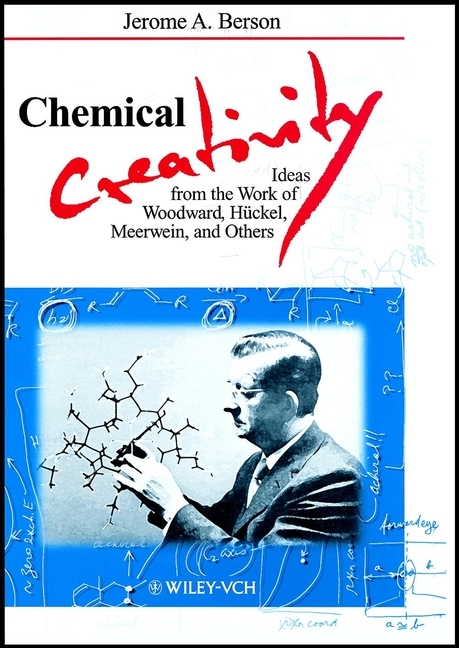
Chemical Creativity
Wiley-VCH (Verlag)
978-3-527-29754-2 (ISBN)
"Die Wissenschaft ist nichts Abstraktes, sondern als Produkt menschlicher Arbeit auch in ihrem Werdegang eng verknüpft mit der Eigenart und dem Schicksal der Personen, die sich ihr widmen." Emil Fischer, NobelpreisträgerWo liegt der Ursprung "chemischer Kreativität"? Welche gedanklichen Leistungen und Experimentierkunst stecken hinter den bahnbrechenden Erkenntnissen der Chemie? Wie haben die Pioniere dieser Wissenschaft die fundamentalen Probleme ihrer Zeit erkannt und gelöst? Warum sind sie an anderen vorübergegangen, obwohl die Lösung greifbar nahe lag? Wie haben Persönlickeit, Alltag und konkurrierende Wissenschaftler ihre Forschung beeinflußt?Diesen Fragen - von zentraler Bedeutung für die Arbeit eines jeden Chemikers - geht das Buch von Jerome A. Berson am Beispiel außergewöhnlicher Chemiker auf höchst fesselnde und informative Weise nach. Der Autor versteht es ausgezeichnet, durch umfangreiche Zitate dieser Forscher, ihrer Zeitgenossen und Schüler die wissenschaftlichen Hintergründe chemischer Erkenntnisse mit den Schicksalen ihrer Entdecker zu verbinden. So ist ein detailliertes Bild vom Leben und Wirken Woodwards, Hückels, Meerweins und anderer herausragender Wissenschaftler entstanden - ein Stück lebendiger Chemiegeschichte, das dazu beitragen kann, die eigene Forschung erfolgreicher zu machen.
Jerome A. Berson received a B.S. in chemistry from the City College of New York in 1944. After a brief period in the industry with Hoffmann-La Roche in New Jersey, he served in the Army of the United Stated (1944-1946, China-Burma-India Theater). In 1946, he entered graduate study at Columbia University where he took M.A. and Ph.D. degrees with W. von E. Doering. He was a post-doctoral fellow at Harvard University (with R. B. Woodward) in 1949-1950. Subsequently, he taught chemistry at the University of Southern California (1950-1963), the University of Wisconsin (1963-1969), and Yale University (since 1969). He is presently Sterling Professor Emeritus of Chemistry at Yale. His research group has concentrated its efforts on the elucidation of reaction mechanisms and the synthesis of molecules of theoretical interest. In the latter category, a principal activity has been the study of non-Kekulé compounds. In recent years, he has written on the history of science, producing a number of articles and two books, both published by Wiley-VCH: Chemical Discovery and the Logicians' Program (2003) and the present book, Chemical Creativity.
INTRODUCTION
The Nature of Science and the History of Science
An Experiment
DISCOVERIES MISSED, DISCOVERIES MADE - TWO CASE STUDIES OF CREATIVITY IN CHEMISTRY
Science and the Individual
Diels, Alder, Their Competitors, and the Discovery of the Diene Synthesis
Thiele
The Alternation Effect and the Discovery of Orbital Symmetry
ERICH HÜCKEL AND THE THEORY OF AROMATICITY - REFLECTIONS ON THEORY AND EXPERIMENT
Debye-Hückel Theory of Electrolytic Solutions
Nature of the Double Bond
Hybridization in Double Bonds
Benzene Problem
MO Description of Conjugated Cyclic Compounds
Orbital Symmetry (Woodward-Hoffmann Rules)
Extension of Cyclic p-Electron MO Theory to Transition States of Pericyclic Reactions
Violation of Hund's Rule in Biradicals
Reflections on Hückel's Career
THE DIENONE-PHENOL MYSTERIES
Isolations of Estrogens
Approaches to the Estrogens by Aromatization of Ring A
Alicyclic Steroids
Woodward's Challenge
Misgivings about the Structures
Why did Woodward Undertake the Correction of the Phenolic Structures?
Woodward and the Total Synthesis of Steroids
Approaches and Achievements
Mechanistic Motivation
MEDITATIONS ON THE SPECIAL CONVICTIVE POWER OF SYMMETRIZATION EXPERIMENTS
Enolization as a Mechanism of Symmetrization
The Menthone Problem
Tricyclene and the Wagner-Meerwein Rearrangement
The Pinacol Controversy
The Favorskii Rearrangement
Symmetrization
Racemization Machines with no Achiral Parts
Direct Nucleophilic Displacement Reaction
The Walden Inversion
Biological and Evolutionary Attraction of Symmetry
Epilogue
| Erscheint lt. Verlag | 22.2.1999 |
|---|---|
| Sprache | englisch |
| Maße | 170 x 240 mm |
| Gewicht | 410 g |
| Themenwelt | Sachbuch/Ratgeber ► Natur / Technik ► Naturwissenschaft |
| Naturwissenschaften ► Chemie | |
| Schlagworte | Anorganische Chemie • Chemie • Chemie / Allgemeines, Lexika • Chemiker • Chemistry • Geschichte • Geschichte der Medizin u. Naturwissenschaften • History • History of Science & Medicine • History of Science & Medicine • Inorganic Chemistry • Organic Chemistry • Organische Chemie • Symmetrie • Theoretische Chemie • Wissenschaftsgeschichte |
| ISBN-10 | 3-527-29754-5 / 3527297545 |
| ISBN-13 | 978-3-527-29754-2 / 9783527297542 |
| Zustand | Neuware |
| Informationen gemäß Produktsicherheitsverordnung (GPSR) | |
| Haben Sie eine Frage zum Produkt? |
aus dem Bereich


